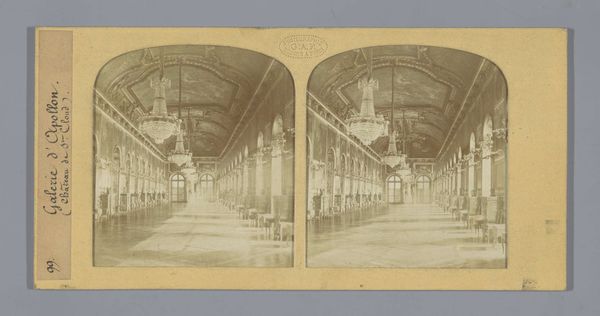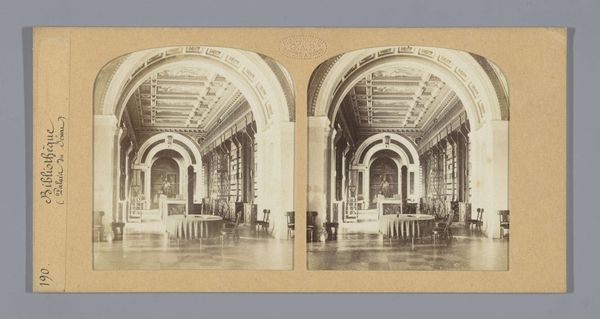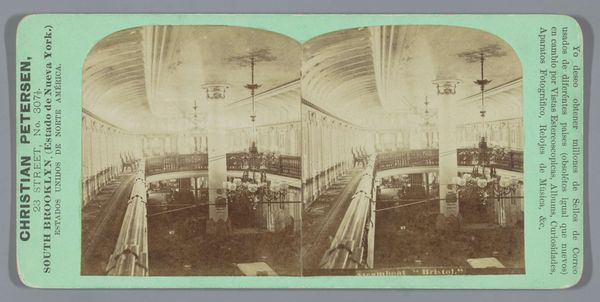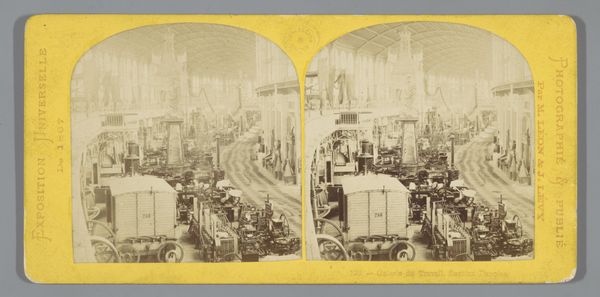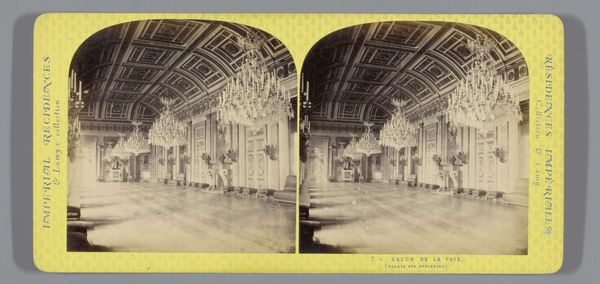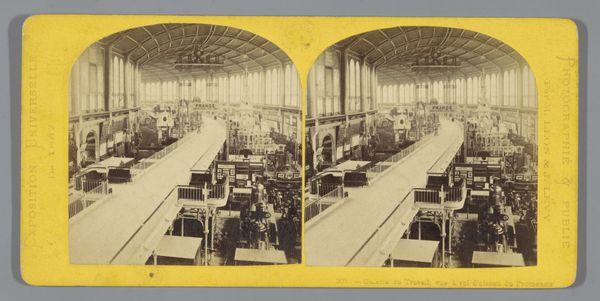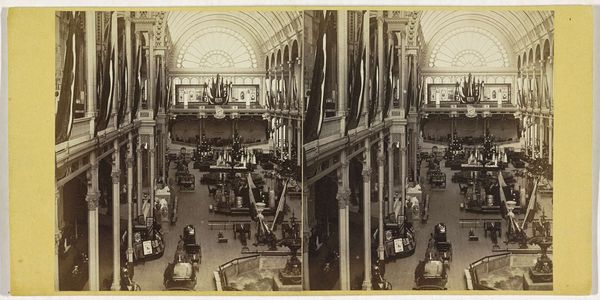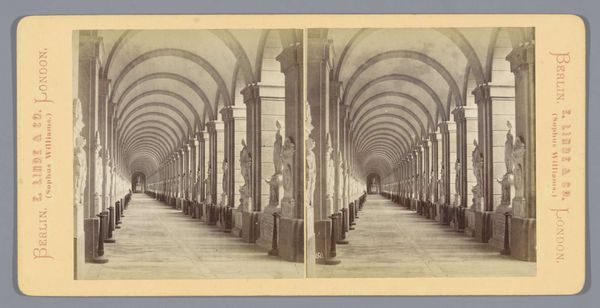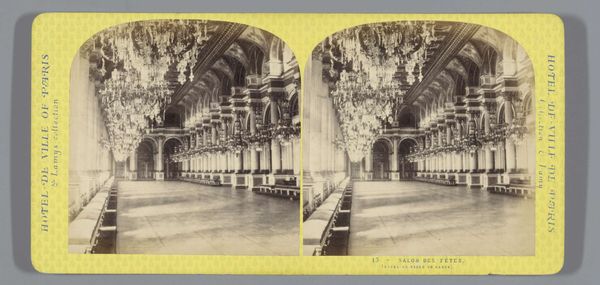![[Group of 266 Stereograph Views of the 1855 and/or 1867 Universal Expositions in Paris, France] by M. Leon](/_next/image?url=https%3A%2F%2Fd2w8kbdekdi1gv.cloudfront.net%2FeyJidWNrZXQiOiAiYXJ0ZXJhLWltYWdlcy1idWNrZXQiLCAia2V5IjogImFydHdvcmtzL2UxYWVlOGM2LTcyYmUtNDBmYy05MmI0LTlmMDA1ZmU3ZDgwNC9lMWFlZThjNi03MmJlLTQwZmMtOTJiNC05ZjAwNWZlN2Q4MDRfZnVsbC5qcGciLCAiZWRpdHMiOiB7InJlc2l6ZSI6IHsid2lkdGgiOiAxOTIwLCAiaGVpZ2h0IjogMTkyMCwgImZpdCI6ICJpbnNpZGUifX19&w=3840&q=75)
[Group of 266 Stereograph Views of the 1855 and/or 1867 Universal Expositions in Paris, France] 1850 - 1919
0:00
0:00
print, photography
#
16_19th-century
# print
#
landscape
#
photography
#
19th century
#
cityscape
Dimensions: Mounts approximately: 8.9 x 17.8 cm (3 1/2 x 7 in.)
Copyright: Public Domain
Editor: This is a stereograph, taken between 1850 and 1919 by M. Leon. It's one of a set of 266 prints showing the Universal Expositions in Paris. Looking at this double image, I’m struck by the sheer scale of the building, the rows of stalls receding into the distance... what elements jump out at you? Curator: The composition relies heavily on linear perspective, directing the viewer’s gaze towards a vanishing point. Consider how the photographer has utilized the inherent symmetry of the architectural space and the double exposure typical of stereographs to create an augmented sense of depth. Editor: The symmetry is definitely powerful. Do you think the photographer chose this viewpoint deliberately to emphasize that? Curator: Precisely. Notice also the repetition of forms, in particular the geometry of the roof structure and the modular stall design below. This repetition functions rhythmically. It establishes a pattern but lacks the dynamism of variation, thus producing a certain tension between order and monotony. Editor: I hadn’t considered that tension before, but I see it now. How does the tonal range play into the overall effect? Curator: The sepia tones, combined with the relative softness of the photographic image, lend a uniformity of color that focuses attention on the forms rather than specific details. The variations in light and shadow articulate the architectural space but also serve to flatten the scene. Consider how that flattening may contribute to that tension you've seen between order and monotony. Editor: It is quite remarkable how many layers one can see within this rather modest photograph. Curator: Yes. The strength of formalist analysis resides in close and repeated examination. Through this lens, seemingly straightforward artworks become multifaceted objects worthy of our close attention.
Comments
No comments
Be the first to comment and join the conversation on the ultimate creative platform.
